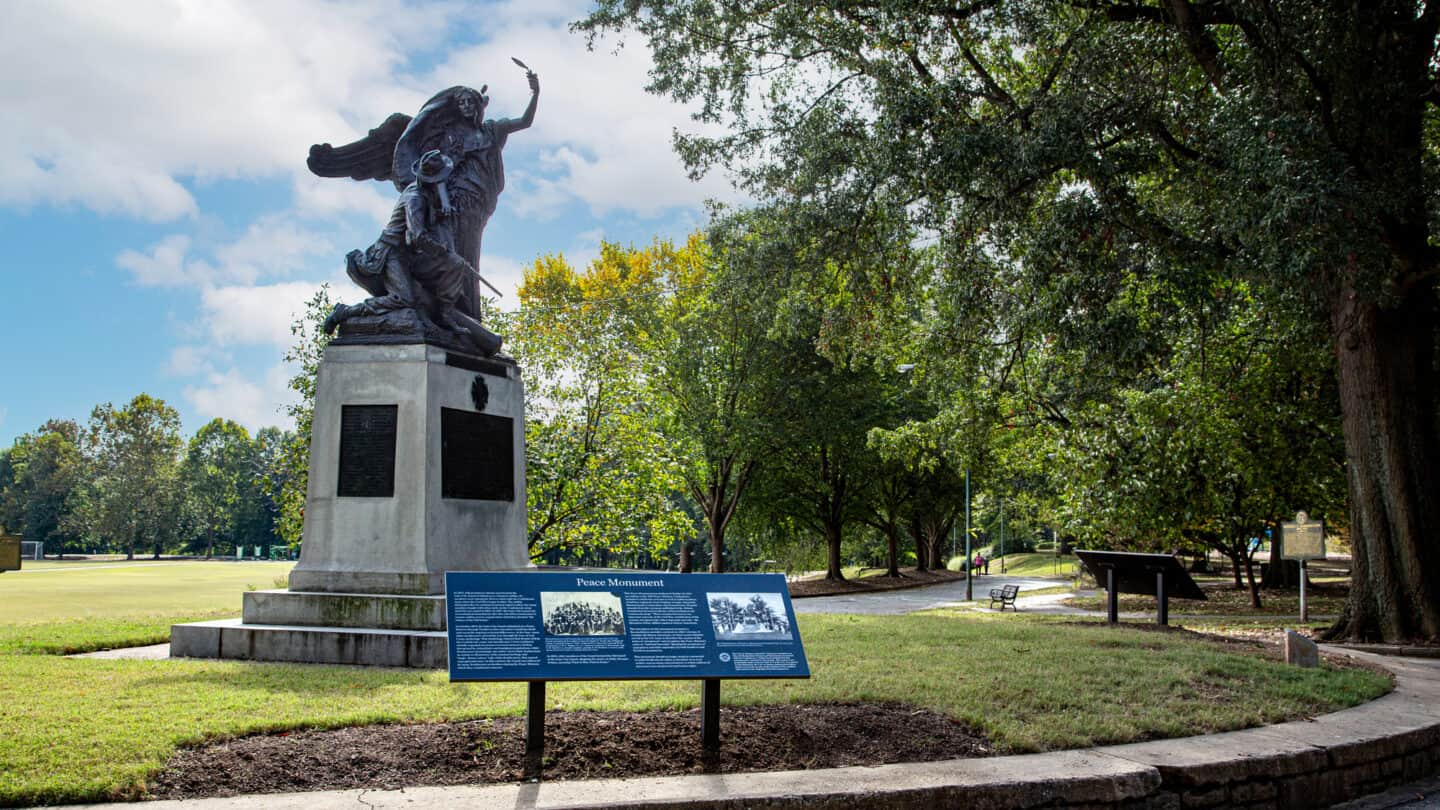
In 2016, Atlanta History Center published the first iteration of this online toolkit, which was designed to help communities address Confederate monuments in their midst. Over time, this toolkit has been expanded to include case studies, a research guide, and other resources for fostering community conversations.
The goal of this toolkit is to inform productive, inclusive community discussions. Through these conversations, communities can decide the best course of action for the future of public monuments, street names, and other historical references. Studying these public historical references uncovers stories from the past that provoke discussions about who should be honored in our communities and why.
Background. Confederate monuments.
While many Confederate memorials of the 1860s through 1880s were erected to mourn and honor Confederate dead, most Confederate monuments were created during the Jim Crow era beginning in the 1890s. White peoples in power, including former Confederates, enacted racial segregation laws to create a society based on white supremacy—one that mimicked the Southern social, political, and economic order of slavery prior to the Civil War and emancipation. These laws were reinforced by social practices as well as race-based violence.
While conducting research on Confederate monuments, pay close attention to the speeches and writings of those in power when monuments were erected. Many explicitly express sentiments of Lost Cause ideology.
Lost Cause ideology, an alternative explanation for the Civil War developed by white Southerners after the war’s end, seeks to rationalize the Confederacy. It claims that slavery was not the central cause of the Civil War. Instead, it claims the primary motivations for secession were threats to the U.S. Constitution and the principle of states’ rights. It deliberately leaves millions of people out of the story, ignoring the agency of enslaved Black people in their liberation and denying the diversity of political sentiment among white Southerners. Slavery was the central cause of the Civil War. Emancipation of four million enslaved people and the reunification of the United States were its most important outcomes.
During your research, examine what was said about the causes the Civil War prior to Confederate secession and after United States victory. One of the key criticisms of Lost Cause ideology is that it ignores the overwhelming historical evidence linking secession directly to slavery. By examining this evidence, the meaning of Confederate monuments as symbols of the Lost Cause and white supremacy as manifested by Jim Crow segregation, become clear.
Due to this history, the status quo of leaving monuments alone is not a principled option. Monuments should either be placed in historical context or removed. Only with accurate and honest historical interpretation can we understand how the circumstances of our collective past continue to shape the present and our future together.
This website can help you to better understand Confederate monuments and the context in which they were created. Start with the historical introduction, which includes information about who erected the monuments, along with when, where, and why. The Resources page includes a template to guide researchers, resources for structuring productive conversations, as well as books, scholarship, and latest news on the subject. The Case Studies page provides examples of how other communities have responded to this issue.
For materials, questions, or comments, send us an email at monuments@atlantahistorycenter.com.
Resource. Toolkit.
-
Confederate monuments were built across the United States, including in states that were not part of the Confederacy. Even today, new monuments are being erected, while others are being removed.
-
The Advisory Committee on City of Atlanta Street Names and Monuments Associated with the Confederacy was tasked with making recommendations for a variety of monuments on city property and street names throughout Atlanta.
-
Confederate Monument Interpretation Guide media coverage.
-
This research template provides a guide for conducting research on individual monuments in local communities.

